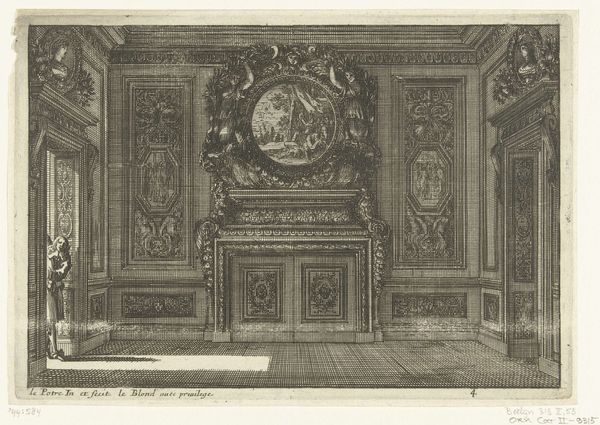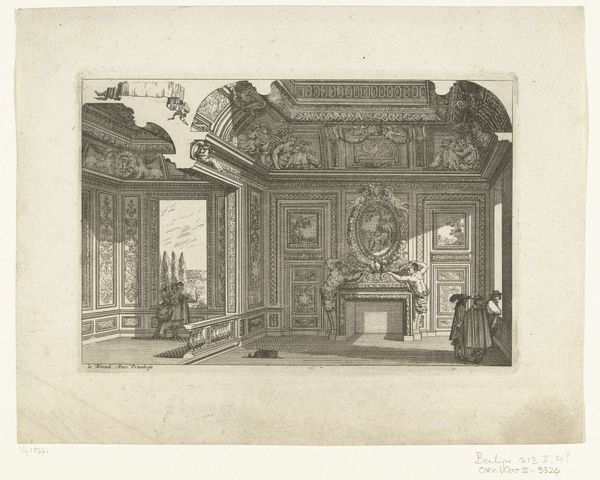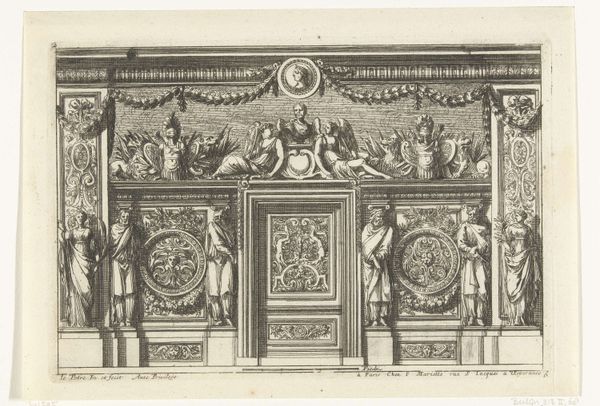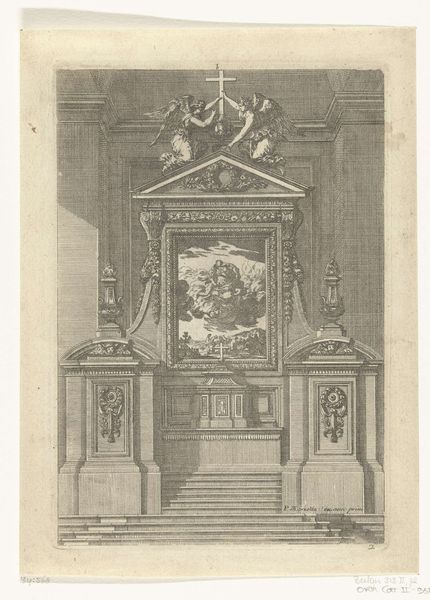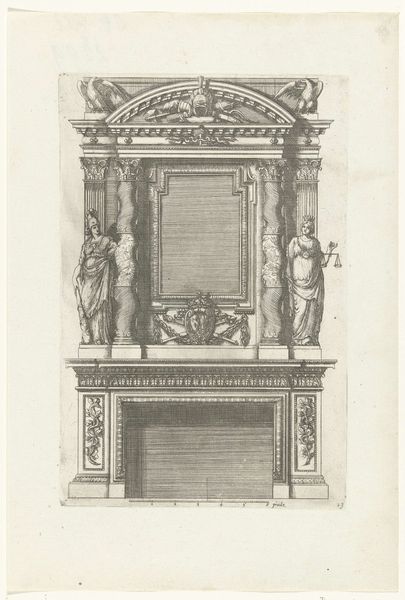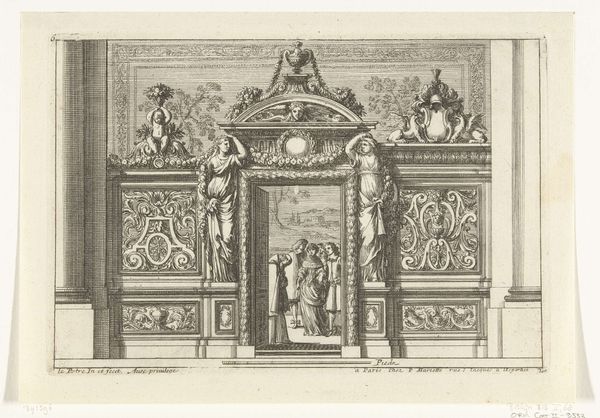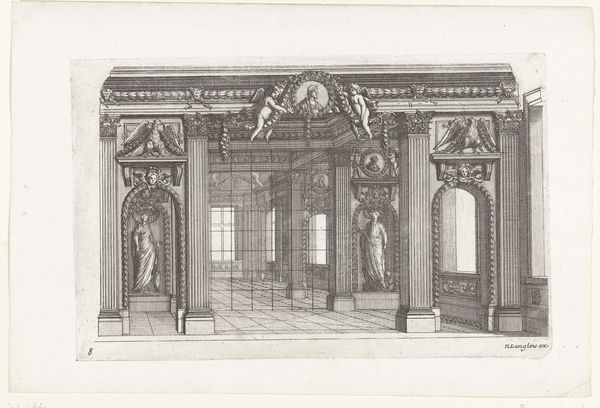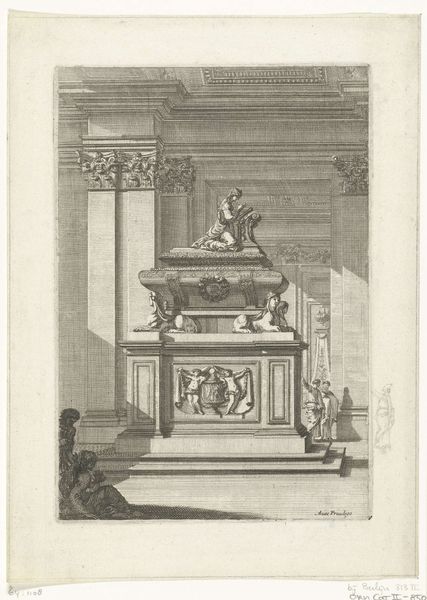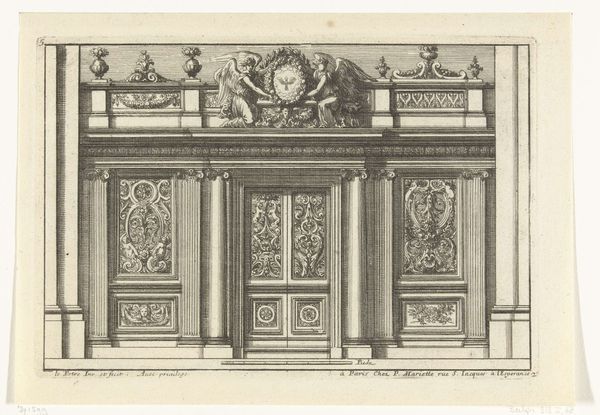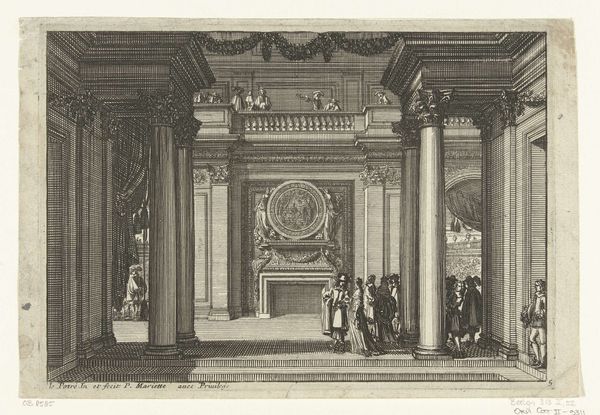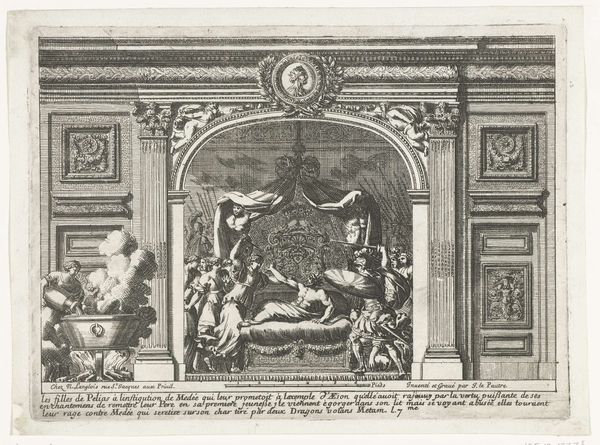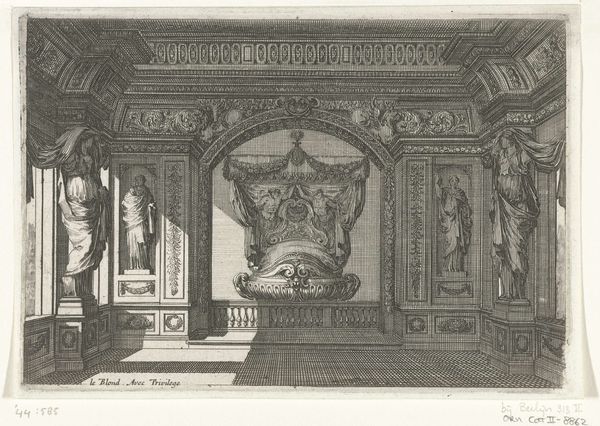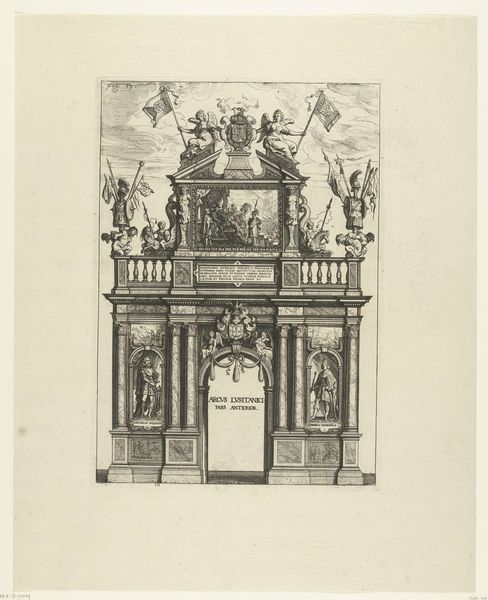
drawing, engraving, architecture
#
architectural sketch
#
drawing
#
aged paper
#
toned paper
#
light pencil work
#
baroque
#
mechanical pen drawing
#
pencil sketch
#
old engraving style
#
sketch book
#
personal sketchbook
#
pen-ink sketch
#
line
#
cityscape
#
engraving
#
architecture
Dimensions: height 148 mm, width 213 mm
Copyright: Rijks Museum: Open Domain
Editor: Here we have "Onderboezem met keizersbuste," made before 1716 by Jean Lepautre. It's an engraving, currently held in the Rijksmuseum. It looks like a detailed architectural sketch... very grand, with all those arches and columns! I’m curious, what’s your perspective on a piece like this? Curator: The rendering certainly is magnificent. But consider the process; it’s more than just an aesthetic exercise. Lepautre is depicting the material ambition of empire, the desire to construct power – both literally, in these spaces, and figuratively. Think about the labor required: quarrying stone, sculpting details, printing this image for dissemination…all under the auspices of privilege. Editor: So you're saying it’s not just a pretty picture; it’s about the social structures behind the actual making? Curator: Precisely! The very paper it's printed on, the ink, even the engraving process, point to specific industries and economies supporting this visual representation of power. Who owned this image? Where was it displayed? What sort of aspiration did the depiction inspire? It all speaks to a system of material production intertwined with ideological aspirations. Editor: That makes me think about who got to enjoy these spaces versus those who actually built and maintained them. Did prints like this influence later architectural design, spreading these ideas of power? Curator: Absolutely. Prints were a key form of disseminating ideas; think about how they informed tastes and aspirations. Moreover, it solidified a clear division of labor, promoting a culture of consumption where "high art" separated from the everyday labor involved in creation. We should be considering whose hands created the spaces being portrayed and what resources were needed for them to be built. Editor: I see your point. Looking at it now, it's less about the beauty of the design and more about the complex network of production, consumption, and social hierarchy it represents. Curator: Indeed. It encourages us to look beyond surface appearances and really examine the world of labor and resources that brought this image – and the depicted architectural forms – into being. Editor: That gives me a lot to consider. Thanks!
Comments
No comments
Be the first to comment and join the conversation on the ultimate creative platform.
